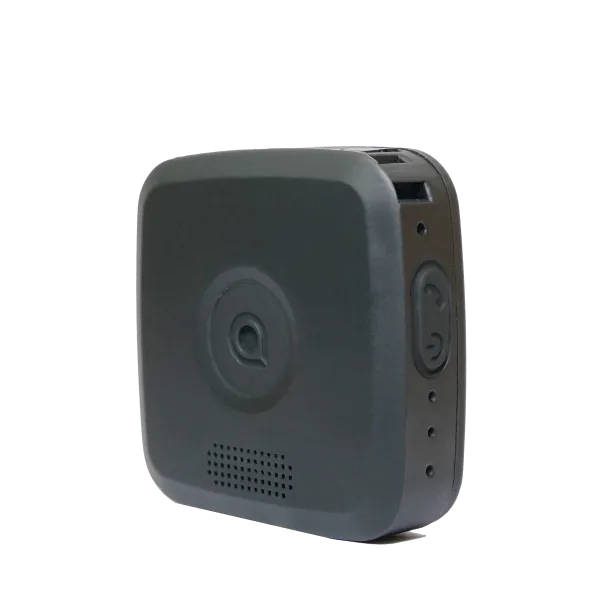How Many Lone Workers in the UK are Attacked Every Day?
Lone workers in the UK are at growing risk of violence, abuse, and injury. But how many incidents actually happen each day? From retail to healthcare, this article breaks down the latest lone worker attack statistics and explores how employers can improve safety, stay compliant, and protect their workforce.

Lone Worker Attacks in the UK: Is the Risk Rising?
Lone workers face increasing risks of verbal and physical attacks, with a British Crime Survey estimating that 150 lone workers in the UK are attacked daily—that’s 54,750 incidents per year. But with workplace trends shifting and violence in certain industries on the rise, is this figure now even higher?
In addition to this, the Health and Safety Executive’s (HSE) latest violence at work figures show 649,000 incidents reported. SoloProtect's 2024 Impact Report revealed a 132% increase in physical attacks and a 104% rise in weapon-related incidents against lone workers over the past three years.
Increased risk in sectors like healthcare, retail, and field work has made lone worker protection a growing concern for UK employers.
How Many Lone Workers Are There in the UK?
Estimates suggest that approximately 20% of the 30+ million UK's working population are lone workers, equating to around 8 million individuals. However, other sources indicate that there may be between 7 and 9 million lone workers, with expectations of this number growing in the coming years.
This increase is attributed to the rise in remote and hybrid working patterns, as many companies have adopted flexible working arrangements.
With a lot of companies choosing remote or hybrid working patterns for employees, it's no surprise that a survey by the BBC found that all 50 of the UK’s largest employers said they do not plan to bring people back to the office full time:
- Aviva, which has 16,000 workers in the UK, said 95% of its workers would like to spend some of their time working flexibly and remotely in different locations.
- Recruitment firm Adecco, which has some 34,000 UK workers, said about four-fifths of its staff now work remotely.
With many people moving towards a less traditional workplace, it’s important for employers to be aware of their health and safety responsibilities.
Take a look at our guide:
Health and Safety for Home Workers.
Retail Workers: Shocking Stats on Daily Abuse
Retail workers are often overlooked as lone workers, but many regularly work alone, increasing their risk of workplace violence and abuse.
There’s been a significant rise in the number of attacks on retail workers with the British Retail Consortium reporting:
- 455 incidents of violence and/or abuse against retail workers each day.
- That’s 166,075 across the whole year which is a shocking figure.
In fact, the Co-op alone reported a 76% rise in verbal abuse and anti-social behaviour with more than 100 incidents each day. This included threats from a variety of weapons, being spat at, stalked, or coughed at.
You can read more about the risks to retail workers here.
NHS Lone Workers: Violence Against Healthcare Staff
Healthcare professionals, including NHS staff, are frequently lone workers, putting them at high risk of workplace violence and abuse.
In the NHS Staff Survey:
- 14.5% of workers said they had experienced at least one incident of physical violence, and
- 33.4% of ambulance crew said they had experienced violence at work.
Lone Worker Fatalities: How Many Deaths Each Year?
It’s difficult to determine how many lone workers die each year. This is because some fatalities will happen while an employee is completing a task alone, however, they may not necessarily have been classed as a “lone worker”.
For example, the HSE reported 39 fatalities in the construction industry which amounts to 27% of all workplace fatalities within this period.
Even though the perception may be that construction workers generally work alongside others, due to the scale of construction sites, some of these fatalities may have occurred while the worker was carrying out a task in a remote area of the site.
Is Lone Working Legal and Safe in the UK?
According to the HSE, working alone is completely legal and will often be safe.
However, it’s important for employers to be aware of their health and safety responsibilities toward lone or remote workers. In a nutshell, employers are responsible for the health and safety of their lone or remote workers wherever they’re based. This could be in the office, on-site, at home, driving a lorry or car, visiting people’s homes or anywhere else they might work.
Therefore, employers must do a comprehensive risk assessment before any workers are allowed to work alone. This involves thinking about what might cause harm to employees and/or the public and deciding whether they have appropriate safeguarding measures in place.
Personal Safety Devices for Lone Workers
For many organisations that employ lone workers, one of these safeguarding measures is a personal safety solution that helps to protect lone workers from risk. It ensures the fastest possible emergency response should an incident occur and provides workers with peace of mind that someone will be on hand to support them should they need it.
Lone worker safety devices—such as panic alarms, man-down detection, and GPS tracking—are crucial for emergency response and peace of mind.
You can find out more about SoloProtect's personal safty solutions here.
You should also ensure your lone worker policy is up to date to account for any changes that may have come about due to COVID or any other factors.
Take a look at our lone worker policy template.
Lone Working Statistics: What Employers Must Do
In summary, the report which cites 54,750 lone workers being attacked each year is now extremely out of date. The working landscape has changed dramatically in the last few years and the statistics for the retail and healthcare sectors alone far exceed this figure.
It's fair to say that the number of attacks on lone workers every day is far too high and it's, therefore, important for employers to carefully consider the risks associated with both full-time lone working and individual tasks that may be carried out alone.
We will monitor official crime reports to provide an update when new information becomes available.
Ready to Protect Your Lone Workers?
SoloProtect offers market-leading personal safety devices and apps designed for remote, mobile, and high-risk workers. Whether you're in retail, construction, healthcare, or the public sector, we have a solution that suits your team.
Book a free demo, request a quote, or get answers to your questions:
- Book a Lone Worker Safety Demo →
- Get a No-obligation Quote →
- Contact Us →
- Call us: 0114 399 6000
Your message has been received and we will be in touch shortly.










.webp)
.webp)









